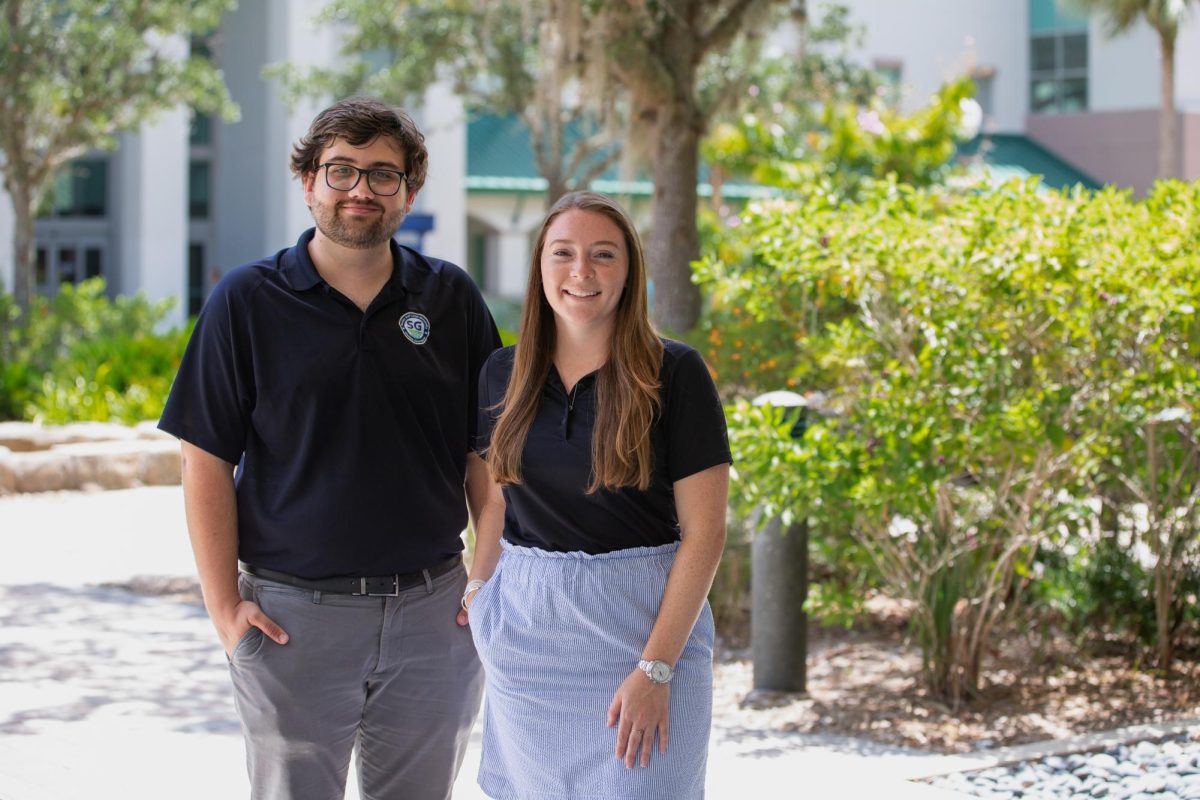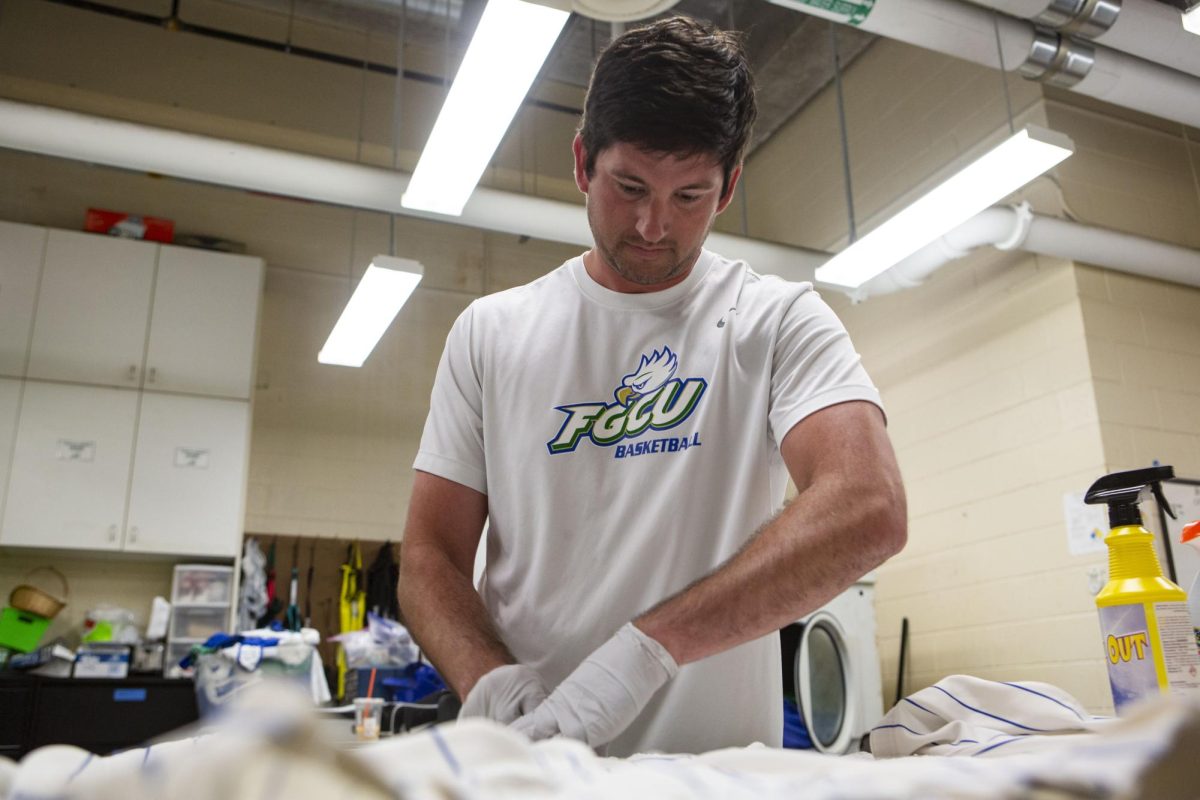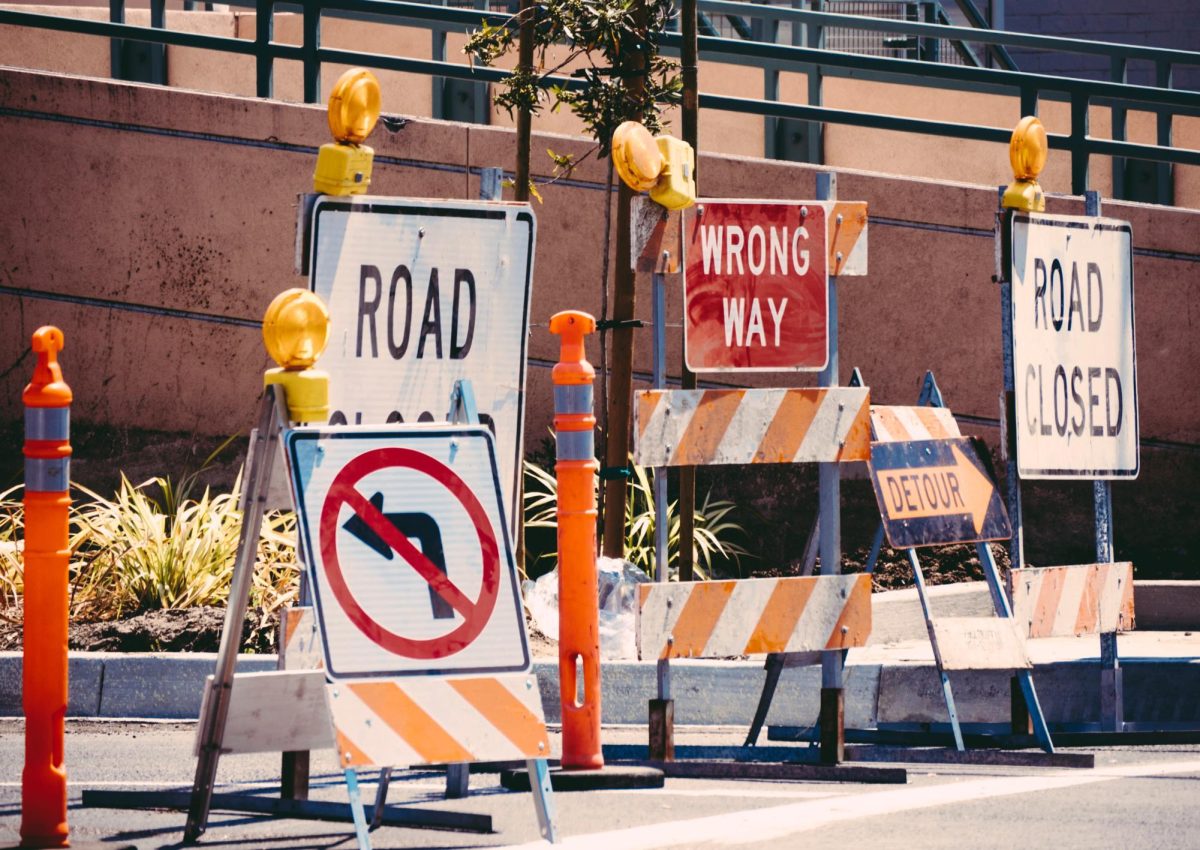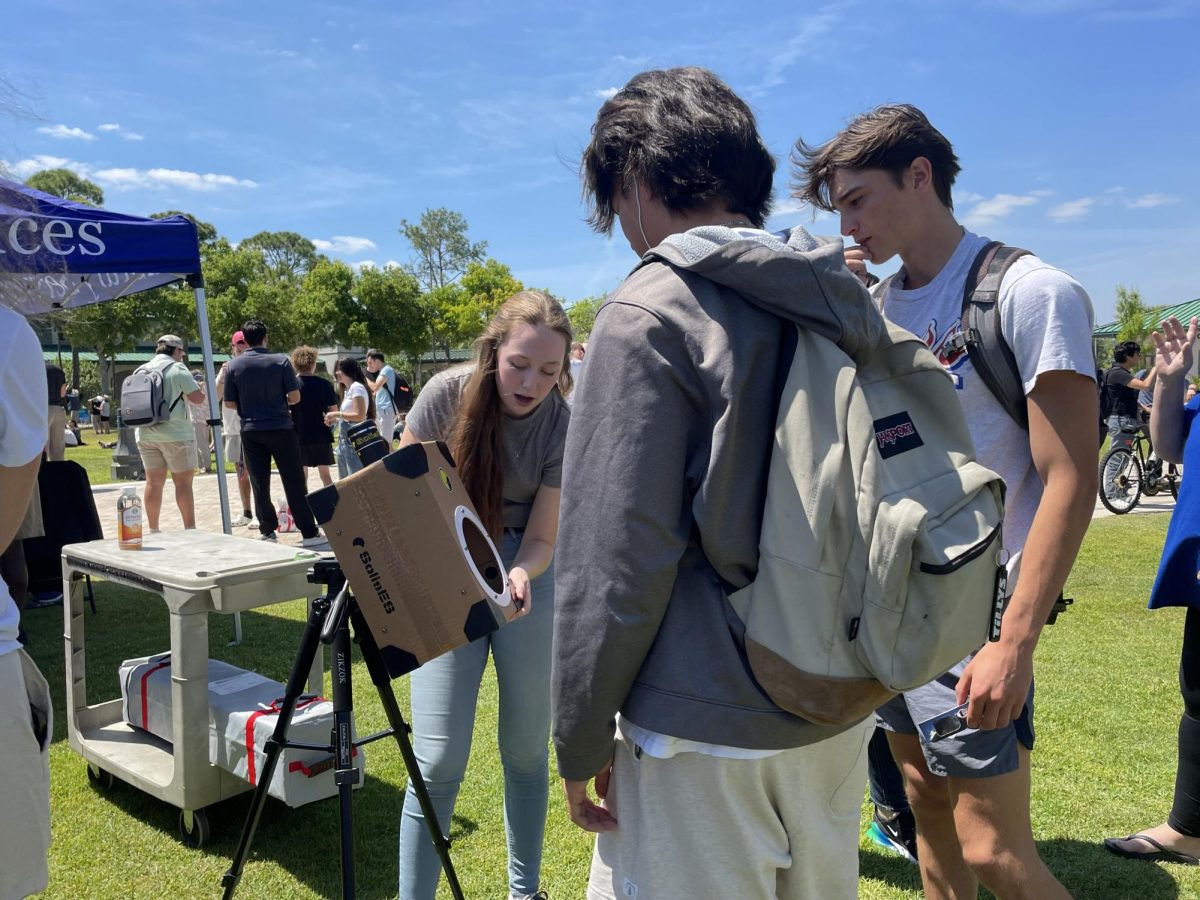To deal with growing traffic demand on local infrastructure, a new kind of interchange is coming to the intersection at I-75 and Colonial Boulevard in Fort Myers.
The intersection is a couple exits north of Florida Gulf Coast University, large amounts of traffic on the road are a symptom of a growing Southwest Florida traffic problem.
Thomas Hagin, a senior at FGCU, said he hopes the changes coming to Colonial, and the impacts of those changes, extend closer to school.
“I’ve been on the roads where the project is taking place,” he said. “It’s in dire need of renovation.”
The renovations could help relieve commute times for students who live further up in Fort Myers for a variety of reasons, such as cost of living compared to the Estero area or proximity to family.
“Hopefully, this will work and relieve traffic,” Hagin said. “Traffic in SWFL is pretty bad during certain times of the day.”
“A big question I have is how long will this project take,” he said. “The renovations for Exit 123 and the roads around it took years.”
The diverging diamond interchange is set to replace the current intersection, which is organized with traditional cross-traffic left-turn lanes using traffic lights. It’s expected to be completed in 2024.
The $52.7 million project is being run by the Florida Department of Transportation. It started in early 2021 and a study was conducted for the department in 2017 to help determine the intersection’s best ways to improve.
Brian Bollas, the District 1 community outreach manager for the Florida Department of Transportation, said studies like that are typically conducted before undertaking renovation to determine the kinds of improvements necessary.
He said any major change to roads and intersections must not only accommodate “future population projections,” but also the “influx of employment numbers” brought to a given area.
“Not everybody that works in a particular place lives right down the street,” he said.
In a diverging diamond interchange, traffic begins on the right side from a main road, and before any traffic lights, traffic can take a right turn free of an intersection onto an entrance ramp to the interstate.
Immediately after that right turn is a two-way intersection, but traffic instead crosses diagonally instead of straight, forming a diamond-like shape. The right-sided traffic crosses to the left.
Driving on the left side, this switch eliminates the need for the next interchange requiring left-turn lanes and a dedicated left-turn light. Traffic can then take an entrance ramp free of an interchange on their left side to enter the interstate.
These entrance ramps merge with traffic coming from the other direction also entering the interstate.
Cross-traffic not entering the interstate simply continues along and enters another two-way intersection, which results in the left-sided traffic traveling back to the right side. A graphical depiction is included below, courtesy of the Florida Department of Transportation.
One major reason for implementing such an interchange is preventing accidents, Bollas said. With less opportunities for collision, accidents can decline.
“At that same intersection [where people are turning left], you have a lot of people going eastbound to northbound [straight across], so those are two opposing lefts,” Bollas said. “Left turns are usually the most severe types of crashes in terms of amount of damage, injuries, fatalities. Left turns are usually the worst.”
“If we crossed those folks over, that are going to make the left, there’s no need for them to wait at a traffic signal,” he said. “They’re effectively right there at that on-ramp, and the same is true coming in the opposite direction.”
Safety isn’t the only benefit of the diverging diamond. Authorities have chosen this type of intersection to address Southwest Florida’s growing population, which expanded over 38% from 2010, according to the U.S. Census Bureau.
“That type of interchange is fabulous for interchanges where you have a large amount of opposing lefts,” Bollas said. “It’s able to handle a larger volume of traffic, and at the same time, because the roads are braided in the way they are, that also eliminates several signal phases.”
A traffic engineer with Lee County said the diverging diamond can be expected by commuters to lower rush hour’s typical congestion “drastically.”
“Looking historically at locations where other diverging diamonds have been constructed – there’s a vast improvement from before the diverging diamond to after,” said Jillian Scholler, a traffic engineer with Lee County.
Scholler said when examining traffic changes, those renovations must address the “level of service,” which is impacted by how long it takes drivers to cross through an intersection.
“When the delay gets to a point where the level of service degrades below a certain threshold, then that’s when changes are made,” she said.
“Level of service” is a complicated calculation used by traffic experts, which Scholler said is calculated with national standards. In essence, renovations strive to improve the level of service to the best grade possible – “A” being the best and “F” being total gridlock.
To help achieve a higher level of service at Colonial, Scholler addressed one issue faced by intersections during high-volume traffic times: traffic light timings.
With the diverging diamond, traffic crossing through will at one point be between two traffic lights. During busy commute hours, cars can pile up in a line, and traffic from the prior intersection must stop at a green light to prevent blockage if the farther traffic signal has not cleared yet.
“It will probably take a little bit of playing with the signal timing,” she said. “The goal is to prevent that [traffic light blockage] from happening when you time the signals appropriately.”
While the traffic experts are enthusiastic that the new interchange will resolve some issues Southwest Florida residents face during their commutes, that can’t happen until construction completes. Renovating such a busy interchange must be done without disrupting typical traffic flow.
The scene becomes even more complicated with Colonial, Bollas noted, pointing out that engineers are also working on improvements to the nearby intersection on Six Mile Cypress Parkway along with the entrance to The Forum shopping plaza, both located along Colonial.
“Since it’s so complicated, there’s dozens of little phases,” he said, commenting on how crews must make the changes while still accommodating existing traffic flow. This can take the form of making slight lane shifts overnight, and over time, drivers begin taking drastically different paths from before construction began.
“You’re not only improving the interchange, and the on-and-off ramps, but also those improvements along Colonial,” he said. “Plus the interchange section, and Colonial and Six Mile [Cypress Parkway], as well as the intersection at Forum Boulevard.”
“It’s very, very complicated when you have three unique intersection and interchange designs, all right in a row,” Bollas said.
Until construction is finished, drivers should expect the roadways along Colonial and I-75 to routinely make slight shifts.



































